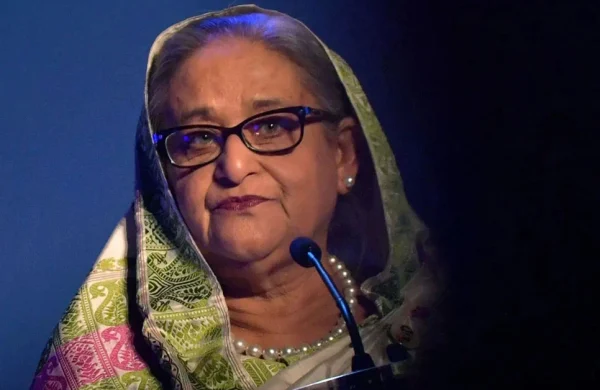WHAT WE EXPECT AND GET…?
- Update Time : Tuesday, November 26, 2024

—Dr Kanan Purkayastha—
The 29th session of the Conference of the Parties (COP29) to the UN Framework Convention on Climate Change (UNFCCC) held in Baku, Azerbaijan was extended for one and a half days. This essay examines what we expect from COP29 and then to see what has been agreed at the end.
First, the New Collective Quantified Goal (NCQG), building on the 100-billion-dollar target developed countries announced in 2009, to provide a new financial framework and support developing countries by giving them financial backing to implement climate mitigation and adaptation actions, and address loss and damage. Regarding this, the initial call was for a finance target of 1.3 trillion US dollars by 2035. It also invites developing countries to make additional contributions.
Second, an expectation to see a revised nationally determined contribution (NDC). This means countries need to step up their ambition beyond previous submissions to meet the evolving global climate goals. It is essential that they reflect the outcomes of the global stocktake adopted at COP 28, which provided a roadmap for a transition away from fossil fuels, double energy efficiency and triple renewables.
NDCs from fossil fuel-producing countries should include details on reserves and extraction, phase-out pathways and plans for a just transition. In order to hold global warming to 1.5 degrees Celsius countries should commit to halt fossil fuel expansion. NDCs should also include commitments to reform fossil fuel subsidies, including a commitment to policy-specific deadlines for phase-out or reform. Also, an adaptation component in their NDCs should ensure it’s informed by National Adaptation Plan processes. NDC should follow a holistic and integrated action on climate and nature.
WHAT WE EXPECT AND WHAT WE GET?
Third, acceleration of global adaptation action. There is a growing recognition that investing in adaptation now will save lives and minimize costs in the future. The implementation of the National Adaptation Plans (NAPs) is an important way to achieve this. Some developing countries have made important progress on adaptation planning and implementation, so it is time to understand what’s working and what needs critical attention. At COP29, NAP assessment is needed to understand the real progress and impediments from financial and capacity lacking.
Fourth, to understand the modality of the public financial flow. This objective relates to other expectations mentioned above. If we go for the fossil fuel subsidy option, then we will undermine the implementation of clean energy technologies. At COP 26, countries agreed to pursue efforts towards the phase-out of inefficient fossil fuel subsidies, a pledge reaffirmed at COP 27. But we see that in 2022 global public financial support augmented. So, clear criteria are needed when subsidies might be justified. The NCQG offers an opportunity to address fossil fuel subsidies, which undermine ambitious climate finance and act as a barrier to aligning financial flows with the Paris Agreement.
Fifth, to understand what is next for the adopted objectives for ‘just transition work programme’. At COP 27, parties agreed to establish a work program on just transition for discussion of pathways to achieving the goals of the Paris Agreement. One year later, at COP 28, parties defined and adopted the programme’s objectives. Two annual roundtable dialogues from now until 2026 is important. At COP 29, it is critical for parties to agree on ambitious and comprehensive modalities to put the Just Transition Work Programme on track.
Sixth, revisit the Article 6 of the Paris Agreement, aiming to establish stronger rules for global emissions trading. Article 6 of the Paris Agreement plays an important role in facilitating international cooperation on climate action through market and non-market mechanisms. At COP 29 we need to see the finalization of rules for international carbon markets, ensuring transparency, environmental integrity, additionality and avoiding double counting, which is key for credible global emissions trading and cost-effective climate mitigation.
Seventh, integration of gender equality and human rights within the climate actions. Across all the negotiation items at COP29, there are opportunities to ensure that social and gender inequalities that exacerbate vulnerability to climate change and limit opportunities to participate in solutions are addressed. Negotiators at COP29 must agree on a framework for gender-responsive climate action. The decision at COP29 must recognize the context-specific, structural, and intersectional nature of gender and social inequalities.
Having thought about the above expectations, I now turn to the achievement from COP 29. The key takeaway from COP29 is that it will triple public finance to developing countries, from the previous goal of USD 100 billion annually, to USD 300 billion annually by 2035. It will secure efforts of all actors to work together to scale up finance to developing countries, from public and private sources to the amount of USD 1.3 trillion per year by 2035. This finance will come from a wide variety of sources, public and private, bilateral and multilateral, including alternative sources. However, the previous 100-billion-dollar finance goal was delivered by countries deemed industrialised by the UN. This excludes nations such as the Gulf States and China which have rapidly developed in the past three decades and are now major emitters. In COP29 discussion happened but these country’s contribution to climate fund remains voluntary. Though UN Climate Change Executive Secretary Simon Stiell, in his closing remarks states that “This deal will keep the clean energy boom growing and protect billions of lives. It will help all countries to share in the huge benefits of bold climate action: more jobs, stronger growth, cheaper and cleaner energy for all. But like any insurance policy – it only works – if the premiums are paid in full, and on time.”
Besides finance, several other important discussions and decisions have been made. COP29 emphasized the importance of providing support to developing country Parties for implementing their national adaptation plans by 2030. COP29 also recognizes that “both incremental and transformational adaptation approaches are essential for protecting the well-being of people and the planet, for saving lives and livelihoods and for implementing the United Arab Emirates Framework for Global Climate Resilience with a view to achieving the global goal on adaptation”.
COP 29 recognised the need for deep, rapid and sustained reductions in greenhouse gas emissions in line with 1.5-degree Celsius pathways and reaffirmed its call on Parties to contribute to global efforts. The conference urges “Parties that have not yet done so and invites all other Parties to communicate or revise, before the seventh session of the Conference of the Parties, their long-term low greenhouse gas emission development strategies; towards achieving just transitions to net zero emissions by or around mid-century, taking into account different national circumstances.”
COP29 recognized that “the full, meaningful and equal participation and leadership of women in all aspects of the UNFCCC process and in national- and local-level climate policymaking and action is vital for achieving long-term climate goals and notes the importance of taking further steps in this regard.”
An important decision reached is the production and dissemination of the Global Environmental Outlook (GEO) report, which is an assessment of the latest science. The report will use all the existing reports that are already out there and review them so that policymakers can see the problem and be motivated to take the action needed. It is to be noted that the seventh edition of GEO (GEO-7)will provide a comprehensive overview of the latest environmental research and provide decision-makers with a roadmap for addressing the triple planetary crisis of climate change, nature and biodiversity loss including desertification, and pollution and waste. The report is being prepared under the stewardship of the United Nations Environment Programme (UNEP). UNEP will publish the GEO-7 report in December 2025.
Another progress report we are aware of is the release of the first Biennial Transparency Report (BTR) by the European Union. The report highlights the importance of transparency in achieving the Paris Agreement goals. BTR revealed a 37 per cent drop in net greenhouse gas emissions since 1990, with a potential pathway to a 90 per cent net greenhouse gas emissions reduction by 2040. Transparency is a key component of the Paris Agreement. Countries submit their NDCs – their plans on how they will reduce emissions – every five years, with the next round of NDCs due in February 2025.
Nature-based solutions are crucial for achieving climate goals. Much of the global economy is dependent on nature and its services. The Executive Director of UNEP mentioned that ‘by supporting Nature-based Solutions and Ecosystem-based Adaptation through nearly 90 global projects, restoring 324,000 hectares and benefiting 3.5 million people’.
At COP28, countries agreed to “transition away from fossil fuels”. This decision did not get importance in COP29. Colombian Environment Minister, Susana Muhamed pointed out the necessity of such a transition: “What is the point of having an agreement and a convention if we cannot deal with the issue that creates the problem”. This was echoed by Ed Miliband, the UK minister for energy security and net zero, who said that in a world facing increasing disasters, “standing still is a retreat”.
Above all, a holistic approach to the NCQG process is needed so that all financial flows align with the goals of the Paris Agreement. It should address the critical need to shift financial flows away from fossil fuels and toward leveraging private investments in the transition to net zero and enhancing climate resilience in developing countries. The process of the implementation of an adaptation plan should recognise the importance of gender equality and social inclusion in adaptation planning and implementation. Regarding the ‘just transition work programme’ a clear, structured work plan is needed. Also, Article 6 mechanisms must be designed to accommodate the diverse contexts and priorities, including those of forest-rich countries. A key component of this is to recognize the needs and rights of Indigenous peoples and local communities ensuring they have fair access to revenues generated through Article 6 activities.
Brazil will host the thirtieth session of the Conference of the Parties (COP 30) from Monday, 10 November, to Friday, 21 November 2025. The decision on who will host COP31 in 2026 has not yet been decided. Both Turkey and Australia have expressed their interest. The opinion has already been expressed by a group of climate leaders including former UN Secretary General Ban Ki-moon, former UN climate chief Christiana Figueres and former President of Ireland Mary Robinson that future UN climate summits should be held only in countries that can show clear support for climate action and have stricter rules on fossil fuel lobbying. Former US Vice President Al Gore also expressed a similar sentiment by referring to an old country song from Nashville that ‘we are looking for love in all wrong places.’ However, we hope for the best outcome in the future conference of parties meeting.
_____________________________________________
The writer is a UK based academic, advisor (Science & Environment), columnist and author



















